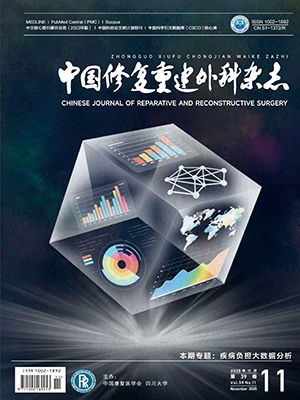| 1. |
Rosholt AP. The Seventh Amendment directive—an unnecessary measure to a necessary end-possible legal challenges to directive 2003/15/EC of the European Parliament and of the Council Amending Council Directive 76/768/EEC under European Union law. Food Drug Law J, 2005, 60(3): 421-446.
|
| 2. |
程樹軍, 焦紅. 實驗動物替代方法原理及應用. 北京: 科學出版社, 2010: 9.
|
| 3. |
Welss T, Basketter DA, Schr?der KR. In vitro skin irritation: facts and future. State of the art review of mechanisms and models. Toxicology in Vitro, 2004, 18(3): 231-243.
|
| 4. |
Portes P, Grandidier MH, Cohen C, et al. Refinement of the Episkin protocol for the assessment of acute skin irritation of chemicals: follow-up to the ECVAM prevalidation study. Toxicol In Vitro, 2002, 16(6): 765-770.
|
| 5. |
Roguet R, Cohen C, Dossou KG, et al. Episkin, a reconstituted human epidermis for assessing in vitro the irritancy of topically applied compounds. Toxicol, 1994, 8(2): 283-291.
|
| 6. |
Kandárová H, Liebsch M, Genschow E, et al. Optimisation of the EpiDerm Test Protocol for the Upcoming ECVAM Validation Study on In Vitro Skin Irritation Tests. ALTEX, 2004, 21(3): 107-114.
|
| 7. |
Chatterjee A, Babu RJ, Klausner M, et al. In vitro and in vivo comparison of dermal irritancy of jet fuel exposure using EpiDermTM (EPI-200) cultured human skin and hairless rats. Toxicol Lett, 2006, 167(2): 85-94.
|
| 8. |
European Centre for the Validation of Alternative Methods. Statement on the application of the EPIDERMTM humanskin model for skin corrosivity testing. ATLA, 2001, 28: 365-367.
|
| 9. |
Netzlaff F, Lehr CM, Wertz PW, et al. The human epidermis models EpiSkin, SkinEthic and EpiDerm: an evaluation of morphology and their suitability for testing phototoxicity, irritancy, corrosivity, and substance transport. Eur J Pharm Biopharm, 2005, 60(2): 167-178.
|
| 10. |
Tornier C, Amsellem C, Anne de Brugerolle de Fraissinette, et al. Assessment of the optimized SkinEthicTM Reconstructed Human Epidermis (RHE) 42 bis skin irritation protocol over 39 test substances. Toxicol In Vitro, 2010, 24(1): 245-256.
|
| 11. |
Katoh M, Hamajima F, Ogasawara T, et al. Assessment of Human Epidermal Model LabCyte EPI-MODEL for In Vitro Skin Irritation Testing According to European Centre for the Validation of Alternative Methods (ECVAM)-Validated Protocol. J Toxicol Sci, 2009, 34(3): 327-334.
|
| 12. |
Hikima T, Kaneda N, Matsuo, K, et al. Prediction of percutaneous absorption in human using three-dimensional human culturedepidermis LabCyte EPI-MODEL. Biol Pharm Bull, 2012, 35(3): 362-368.
|
| 13. |
盧永波, 張勇杰, 金巖. 組織工程皮膚技術及化妝品體外科學檢測的發展. 北京日化, 2016, 124(3): 26-31.0.
|
| 14. |
張廣靜, 卓金士, 金巖, 等. 人的原代上皮角質形成細胞和永生化的上皮角質形成細胞 HaCaT 的增殖能力的比較. 現代生物醫學進展, 2011, 11(1): 68-70.0.
|
| 15. |
OECD Guideline for the Testing of Chemicals. No.439: In Vitro Skin Irritation: Reconstructed Human Epidermis Test Method. Paris: OECD, 2013.
|
| 16. |
ECVAM SIVS: Performance standards for applying human skin models to in vitro skin irritation testing (2007)[S/OL]. http://ecvam.jrc.ec.europa.eu.
|
| 17. |
Brohem CA, Cardeal LB, Tiago M, et al. Artificial skin in perspective: concepts and applications. Pigment Cell Melanoma Res, 2011, 24(1): 35-50.
|




